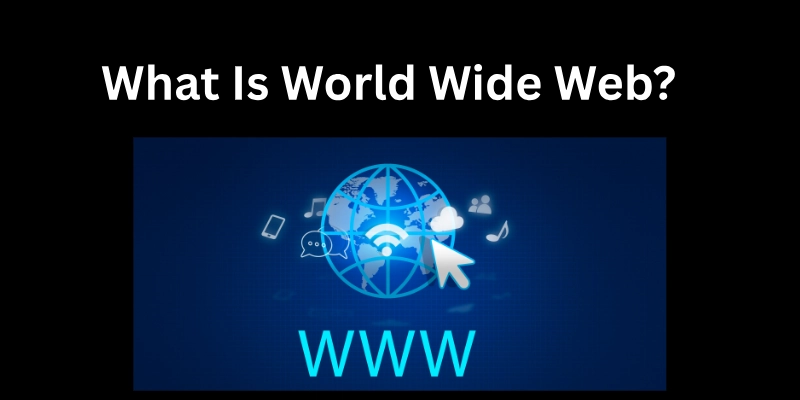World Wide Web Browser: History, Definition & Evolution
Published: 22 Aug 2025
When people search for what is the World Wide Web or what does WWW stand for, the answer usually connects back to the invention of the first World Wide Web browser. A web browser (also called an internet browser, www browser, or web navigation tool) is software that lets users access, read, and interact with websites.
Without browsers, the World Wide Web (WWW) would remain a complex system of data, unreachable for the average person.
In this article, we will explore the World Wide Web browser in detail, covering its history, definition, examples, and evolution over time.
What Is the World Wide Web?
Many people often confuse the Internet with the World Wide Web, but they are not the same. The Web is actually a service that runs on the Internet, allowing us to access information through browsers. To understand web browsers better, let’s first look at what the World Wide Web really is.
- WWW stands for World Wide Web, a system of interconnected documents shared over the Internet.
- It uses hyperlinks, URLs (Uniform Resource Locators), and HTTP (HyperText Transfer Protocol) to connect pages.
- In simple terms, the meaning of WWW is the “web” of information we browse daily through tools like Chrome, Firefox, or Safari.

The First World Wide Web Browser
Every technology has a starting point, and for the World Wide Web, it all began with its very first browser. This groundbreaking tool opened the door to the online world we know today.The first World Wide Web browser was called WorldWideWeb, developed by Tim Berners-Lee in 1990 at CERN.
- It was both a browser and an editor, allowing users to read and create web pages.
- Later renamed Nexus to avoid confusion with the Web itself.
- Introduced the concept of surfing the web, which is still common today.
This was the beginning of digital web browsers and the start of a new information era.
Early Alternatives and Growth
After the release of the first browser, the Web quickly began to expand as developers created new tools to improve accessibility and functionality. Soon after, other examples of World Wide Web browsers appeared:
- Line Mode Browser (1991): A text-based browser that could run on many platforms, including simple terminals. It played a vital role in making the Web accessible beyond the NeXT computer, which hosted the first browser.
- ViolaWWW (1992): An advanced browser that introduced features like scripting, stylesheets, and embedded graphics. It was widely used at CERN and is considered one of the most influential early browsers.
- Mosaic (1993): The first truly graphical browser that displayed images alongside text on the same page. Mosaic is often credited with bringing the Web to mainstream audiences and sparking its rapid global growth.
These innovations marked the early growth of digital web browsers, each improving usability and helping transform the Web from a niche scientific project into a powerful global communication platform.
How Does a Web Browser Work?
When someone asks what is WWW on a computer, the explanation often leads to how a web browser actually works. A browser acts as a bridge between the user and the vast collection of information stored on web servers.
Here’s the basic process:
- User Request: The journey begins when you type a URL (Uniform Resource Locator) into the browser’s address bar or click on a hyperlink.
- Communication with Server: The browser sends this request to the appropriate web server using HTTP or HTTPS protocols.
- Server Response: The server replies by sending the necessary files, such as HTML, CSS, JavaScript, and images.
- Rendering: The browser processes these files with its rendering engine, turning raw code into a structured and interactive webpage.
- User Interaction: Scripts (like JavaScript) allow users to interact with the page whether it’s filling out forms, watching videos, or shopping online.
In short, a web navigation tool transforms technical data into a user-friendly experience that anyone can understand. Modern browsers also include additional features such as caching (to load pages faster), tab management, privacy controls, and support for multimedia content.

Evolution of Browsers
The wide world of web browsers developed rapidly:
- Netscape Navigator ruled in the 1990s.
- Internet Explorer dominated the late ’90s and early 2000s.
- Firefox, Safari, and Chrome brought speed, open standards, and modern design.
- Today’s browsers feature privacy controls, extensions, and cloud sync.
Impact of Web Browsers
The invention of browsers reshaped the world. They:
- Opened the door for e-commerce and online banking.
- Enabled education, e-learning, and research.
- Made entertainment, social media, and streaming possible.
- Connected billions of users to the wide website world.
The Role of W3C and Standards
To make sure that the definition of WWW stayed consistent across platforms, the World Wide Web Consortium (W3C) was founded.
- Promotes open web standards like HTML and CSS.
- Ensures that every online browser (desktop, mobile, or text-based) works the same way.
Legacy of the First Browser
The WorldWideWeb/Nexus browser may seem outdated today, but it was the foundation of the modern web.
- It set the stage for all future browsers.
- Inspired innovations that created the global web browser experience we use daily.
Conclusion
When users ask what is the World Wide Web in computers or definition of World Wide Web, the full answer includes the role of browsers. From Tim Berners-Lee’s Nexus to today’s advanced digital web browsers, they have transformed how people connect, learn, and work.
The World Wide Web browser isn’t just a tool it’s the gateway to the digital age.
Your opinion matters! 🌍 Share your feedback, questions, or ideas in the comments 💬
FAQs
Here are some frequently asked questions (FAQs) about the World Wide Web browser to help clarify key concepts and provide quick answers.
WWW stands for World Wide Web, a system of interlinked hypertext documents and resources that can be accessed through a web browser. It allows users to view and navigate websites using hyperlinks, making the Internet user-friendly and accessible to everyone.
The World Wide Web browser was invented by Sir Tim Berners-Lee in 1990 while working at CERN (European Organization for Nuclear Research). He is credited with not only creating the first browser but also developing key technologies like HTML (HyperText Markup Language), HTTP (HyperText Transfer Protocol), and URLs (Uniform Resource Locators).
The first browser was called WorldWideWeb, which was later renamed Nexus to avoid confusion with the World Wide Web itself. It was both a browser and an editor, meaning users could view and also create/edit web pages directly.
Early examples of browsers include WorldWideWeb (Nexus), Line Mode Browser, ViolaWWW, and Mosaic. Modern browsers include Google Chrome, Mozilla Firefox, Safari, Microsoft Edge, Opera, and many others that support today’s advanced web technologies.
The Internet is the global system of interconnected computer networks that allows devices to communicate with each other. The World Wide Web is a service that runs on top of the Internet, using web pages, websites, and multimedia content linked together through hyperlinks. In simple terms, the Internet is the “infrastructure,” and the Web is one of the “services” running on it.
A web browser works by sending a request to a web server using protocols like HTTP or HTTPS. The server responds with files written in languages such as HTML, CSS, and JavaScript. The browser then processes these files, renders them into a visual interface, and allows the user to interact with text, images, videos, and applications on the page.
Web browsers are crucial because they act as the gateway to the World Wide Web. Without them, users would not be able to easily access information, communicate, shop online, learn new skills, or enjoy entertainment. Browsers make complex network technologies accessible in a simple, visual way for everyone.
As of now, Google Chrome is the most widely used browser worldwide, holding the majority market share. Other popular browsers include Apple Safari (especially on iOS devices), Mozilla Firefox, and Microsoft Edge. Usage trends may vary by region and device type.
Common features of modern browsers include:
- Address/Search bar for typing URLs or queries
- Tabs for opening multiple pages at once
- Bookmarks for saving favorite websites
- History to revisit previously viewed pages
- Privacy/Incognito mode for secure browsing
- Extensions and Add-ons to enhance functionality
- Syncing capabilities across devices using the same account
The future of web browsers is likely to include faster performance, enhanced privacy and security, integration with artificial intelligence, support for Web 3.0 and decentralized applications, and better compatibility with virtual/augmented reality experiences. Browsers will continue evolving to make online experiences more seamless, secure, and interactive.

- Be Respectful
- Stay Relevant
- Stay Positive
- True Feedback
- Encourage Discussion
- Avoid Spamming
- No Fake News
- Don't Copy-Paste
- No Personal Attacks

- Be Respectful
- Stay Relevant
- Stay Positive
- True Feedback
- Encourage Discussion
- Avoid Spamming
- No Fake News
- Don't Copy-Paste
- No Personal Attacks





